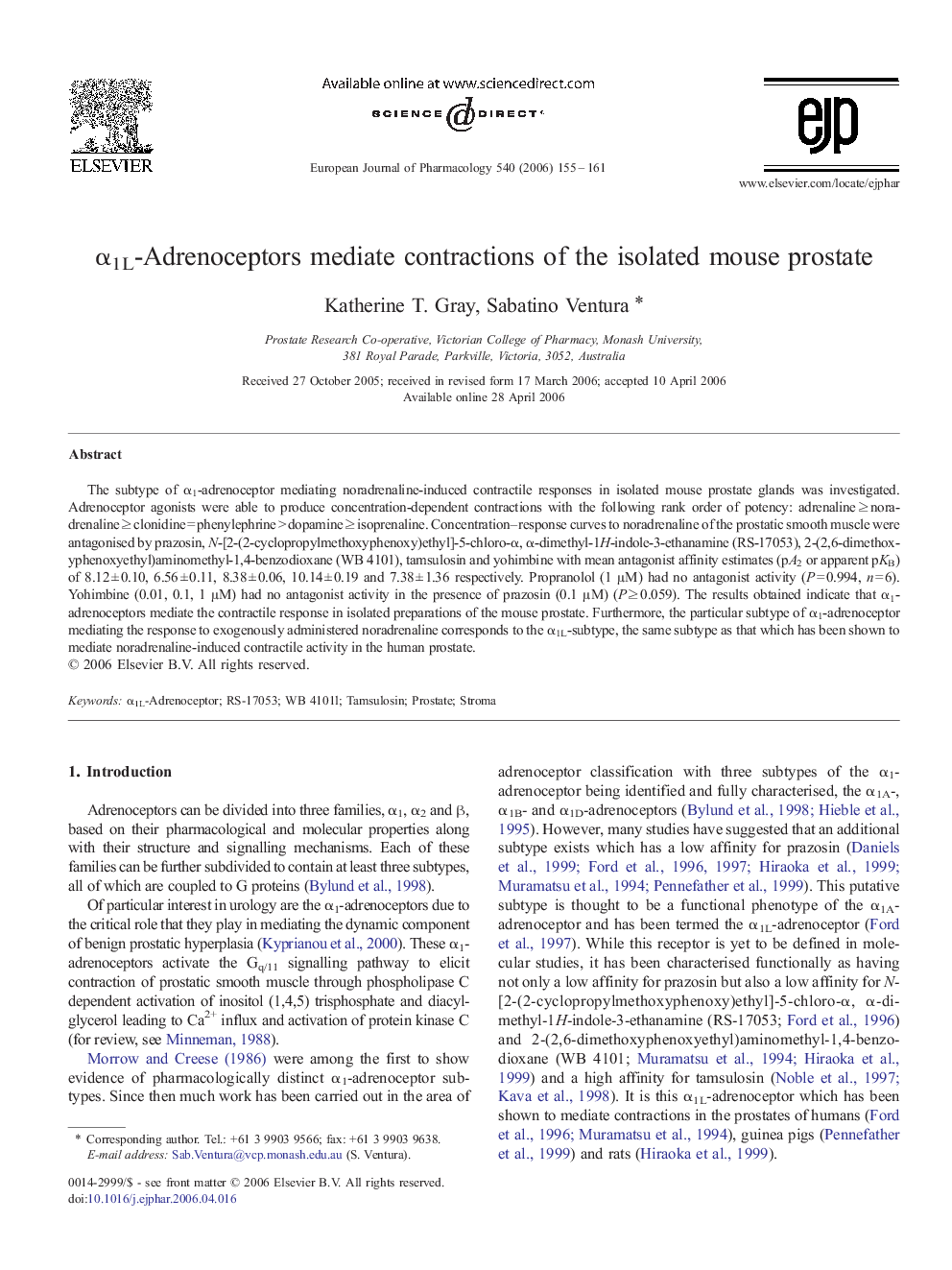| Article ID | Journal | Published Year | Pages | File Type |
|---|---|---|---|---|
| 2537083 | European Journal of Pharmacology | 2006 | 7 Pages |
The subtype of α1-adrenoceptor mediating noradrenaline-induced contractile responses in isolated mouse prostate glands was investigated. Adrenoceptor agonists were able to produce concentration-dependent contractions with the following rank order of potency: adrenaline ≥ noradrenaline ≥ clonidine = phenylephrine > dopamine ≥ isoprenaline. Concentration–response curves to noradrenaline of the prostatic smooth muscle were antagonised by prazosin, N-[2-(2-cyclopropylmethoxyphenoxy)ethyl]-5-chloro-α, α-dimethyl-1H-indole-3-ethanamine (RS-17053), 2-(2,6-dimethoxyphenoxyethyl)aminomethyl-1,4-benzodioxane (WB 4101), tamsulosin and yohimbine with mean antagonist affinity estimates (pA2 or apparent pKB) of 8.12 ± 0.10, 6.56 ± 0.11, 8.38 ± 0.06, 10.14 ± 0.19 and 7.38 ± 1.36 respectively. Propranolol (1 μM) had no antagonist activity (P = 0.994, n = 6). Yohimbine (0.01, 0.1, 1 μM) had no antagonist activity in the presence of prazosin (0.1 μM) (P ≥ 0.059). The results obtained indicate that α1-adrenoceptors mediate the contractile response in isolated preparations of the mouse prostate. Furthermore, the particular subtype of α1-adrenoceptor mediating the response to exogenously administered noradrenaline corresponds to the α1L-subtype, the same subtype as that which has been shown to mediate noradrenaline-induced contractile activity in the human prostate.
